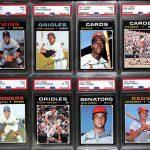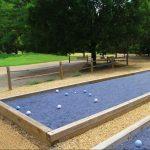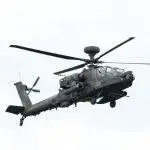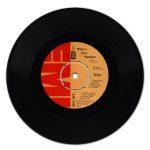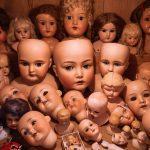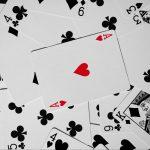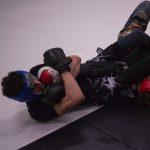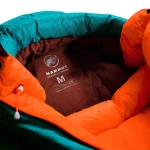Knitting Needle Size Chart by Type of Needle (Including Size Conversion)
The knitting needle size influences the length of the stitches and, as a result, the completed product. The idea of gauge, or how many stitches fit into one inch of knitting, strongly depends on needle size. More giant needles usually give a larger gauge, although the kind and weight of the yarn also have a role.
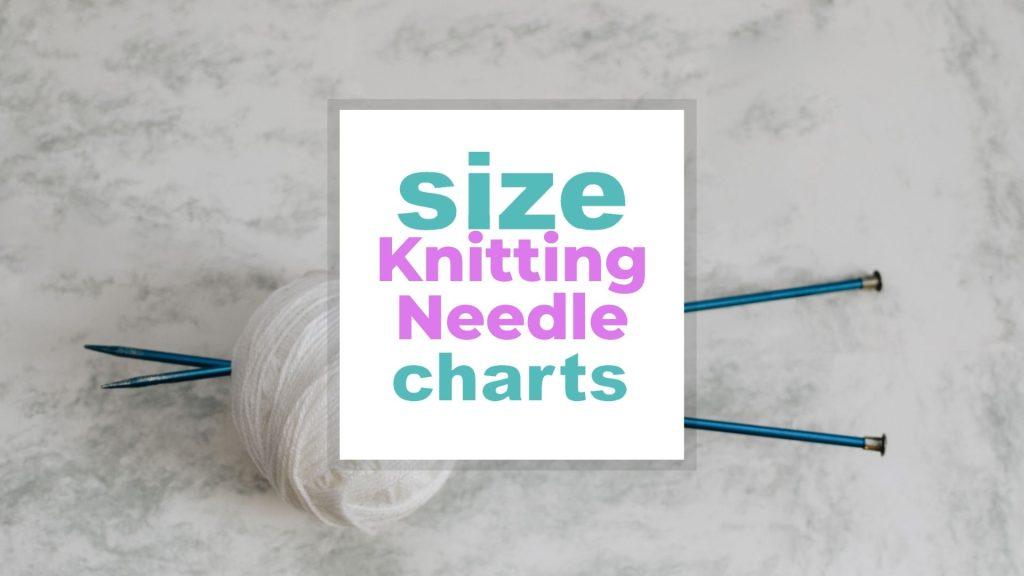
Table of Content of Knitting Needle Sizes
- Converting knitting needle sizes
- Knitting needle size chart for the US and UK
- Knitting needles sizing Japan
- Knitting needles size conversion old vs new
- Types of knitting needles
- FAQ about knitting needle sizes
- Knitting needles size explained in a video
Why Is It Important To Know The Right Size Before You Buy A Knitting Needle?
Are you prepared to begin knitting? If this is the case, you should first consider what type of resources you’ll need to get started.
The first thing that you kneed is a knitting needle. Choosing needles for a project will quickly become second nature. However, what is a knitting needle, and why is a good size matter? This article will teach you all you need to know about knitting needles. After all, the more you know, the simpler it will be to make selections concerning your requirements.
If your gauge does not meet the pattern’s requirements, consider altering the size of your needles. Knitting a test swatch before starting your project is an excellent method to verify the gauge of the yarn and needle combination you’ve selected.
Looking to knit a quilt? check all the different quilt sizes here
Discover all dimensions for clothes sizes here when you have a specific project in mind
Crochet hook sizes you can find here
Converting Knitting Needle Sizes
When estimating the size of knitting needles, there are four primary methods of measurement: metric sizes, US sizes, UK sizes, and international sizes. Sizes (which are also used in Canada) and Japanese sizes. The dimensions are essentially the same in the United States and Japan for the most part; however, things get a bit messy when you throw in the sizing method used in the United Kingdom, as well as the more ubiquitous metric measurements.
Knitting Needle Size Chart for the United States and the United Kingdom
This chart compares the different knitting needles used in the United States and the United Kingdom, as well as crochet hook sizes for good measure. A complete size chart with conversion into crochet hook sizes
| Metric (mm) | US Size | UK Size | Crochet |
|---|---|---|---|
| 2.0 mm | 0 | 14 | – |
| 2.25 mm | 1 | 13 | B |
| 2.5 mm | 1.5 | – | – |
| 2.75 mm | 2 | 12 | C |
| 3.0 mm | 2.5 | 11 | – |
| 3.25 mm | 3 | 10 | D |
| 3.5 mm | 4 | – | E |
| 3.75 mm | 5 | 9 | F |
| 4.0 mm | 6 | 8 | G |
| 4.5 mm | 7 | 7 | – |
| 5.0 mm | 8 | 6 | H |
| 5.5 mm | 9 | 5 | I |
| 6.0 mm | 10 | 4 | J |
| 6.5 mm | 10.5 | 3 | K |
| 7.0 mm | – | 2 | – |
| 7.5 mm | – | 1 | – |
| 8.0 mm | 11 | 0 | L |
| 9.0 mm | 13 | 00 | – |
| 10.0 mm | 15 | 000 | – |
| 12-12.75 mm | 17 | – | – |
| 15-16 mm | 19 | – | – |
| 19.0 mm | 35 | – | – |
| 20.0 mm | 36 | – | – |
| 25 mm | 50 | – | – |
Popular US knitting needle sizes

Knitting Size Chart for Japanese Size
| Metric (mm) | JPN Size |
| 2.1 mm | 0 |
| 2.4 mm | 1 |
| 2.7 mm | 2 |
| 3.0 mm | 3 |
| 3.3 mm | 4 |
| 3.6 mm | 5 |
| 3.9 mm | 6 |
| 4.2 mm | 7 |
| 4.5 mm | 8 |
| 4.8 mm | 9 |
| 5.1 mm | 10 |
| 5.4 mm | 11 |
| 5.7 mm | 12 |
| 6 mm | 13 |
| 6.3 mm | 14 |
| 6.6 mm | 15 |
Conversion between Old and New Knitting Needle Sizes
Knitting needle sizes and sizing schemes have not always been consistent with complicating things further. Knitting needles and patterns from the past were often smaller in size. Converting traditional measures to metric or the new US system may be challenging, and translating whole knitting projects can be a headache.
If you’re knitting a vintage design or have inherited some historic needles, you may want another helpful conversion chart to determine where your arrows stand in terms of dimensions. Use the knitting needle size chart below to convert previous needle sizes to the new system in this scenario.
| Metric Size (mm) | Standard US Size | Old US Size |
|---|---|---|
| 1.0 mm | 00000 | 18 (dpn) |
| 1.125 mm | N/A | 17 (dpn) |
| 1.25 mm | 0000 | 16 (dpn) |
| 1.5 mm | 000 | 15 (dpn) |
| 1.75 mm | 00 | 14 (dpn) |
| 2.0 mm | 0 | 0 (standard) 13 (dpn) |
| 2.25 mm | 1 | 12 (dpn) |
| 2.5 mm | N/A | 1 (standard) |
| 2.75 mm | 2 | 2 (standard) 11 (dpn) |
| 3.0 mm | N/A | 3 (standard) 10 (dpn) |
| 3.25 mm | 3 | N/A |
| 3.5 mm | 4 | 4 (standard) 9 (dpn) |
| 3.75 mm | 5 | 5 (standard) 8 (dpn) |
| 4.0 mm | 6 | N/A |
| 4.25 mm | N/A | 6 (standard) |
| 4.5 mm | 7 | N/A |
| 4.75 mm | N/A | 7 (standard) |
| 5.0 mm | 8 | 8 (standard) |
| 5.25 mm | N/A | 9 (standard) |
| 5.5 mm | 9 | N/A |
| 5.75 mm | N/A | 10 (standard) |
| 6.0 mm | 10 | N/A |
| 6.5 mm | 10.5 | 10.5 (standard) |
| 8.0 mm | 11 | N/A |
Types of Knitting Needle
Knitting needles are classified into three types: straight needles, double point needles (commonly known as dpns), and circular needles. Straight needles are for knitting in rows, dpns are for sewing a round, and circular knitting can do both.
Straight
Straight needles are possibly something you’ve seen in a drawing of someone knitting. If you’ve seen your grandma knit when you were a kid, you’ve undoubtedly seen her use straight needles. Straight needles are used for back and forth work alone, never in rounds. They are about ten ′′ to 14′′ in length. However, they may also be pretty hefty. As a result, they are not the most often used needles in the United States today.
Double Pointed Needles
In contrast to single-pointed needles, double-pointed needles have points on both ends of the hand. Single-pointed needles have a pointy end on just one side of the needle. Straight needles are longer and heavier than double-pointed needles. They’re usually 6 to 8 inches long.
Circular Needles
Circular needles are knitting needles with circular tips are very flexible since they may use them for both working in rows and rounds. As a result, they’re a popular option. Circular knitting needles are your best pick if you want to purchase knitting needles for the first time.
Frequently Asked Questions
1. What size knitting needle should a novice use?
For beginners, medium sizes are usually the best. This indicates that you should seek a width of six (4mm), seven (4.5mm), or eight (8.5mm) (5mm). In terms of length, a 10-inch needle is typically a good starting point since it is tiny enough to be readily handled.
2. What size are ten knitting needles?
Knitting needles in the US range in diameter from 6.0 to 6.3 mm. Knitting needles in the UK size ten will be between 3.25 and 3.3 mm.
3. What is the most common knitting needle size?
US size 8, or 5mm, is the most popular knitting needle size. These needles are most often used because they correspond to worsted-weight yarn, the most commonly used yarn for most knitting designs. These needles are also often regarded as a suitable size for beginning knitters.
4.What happens if you knit with larger needles?
To put it simply, bigger knitting needles produce bigger stitches. The number of stitches you can knit in an inch will rise because a needle with a big diameter will produce longer loops when the yarn is wound around it. To make big, sturdy, airy stitches for things like knitting designs for tote bags, some designers prefer to use big needles.
5. What happens if you knit with two needles of different sizes?
The “torn stitch” look will appear on the yarn if you knit a design with needles of various sizes. Some patterns utilize this tactic on purpose, but you should be cautious not to unintentionally produce this result.
6. A test swatch is what? Must I create one?
A test swatch is a little piece of knitting made using the desired yarn. You are determining how many stitches, when using a certain needle, yarn, and stitch, you will receive in a swatch that is 10 cm/4 in broad and 10 cm/4 in high. It is used to ensure that you are knitting with the gauge or tension required for the design you wish to knit.
7. How do I determine which yarn and needles pair well?
In general, you should “match” your thick yarn and thick needles, or vice versa. Look at the label on the yarn you wish to use to “match” your yarn and needles. A needle or needles with a needle size (or range of sizes) directly next to them will be shown on the label.
Knitting needle sizes explained (video)
Conclusion
This knitting needle size guide will provide you with all the information you want on needle sizes, lengths, and measurements. You will learn how to choose the appropriate needle size for the weight of the yarn you are using and how to convert needle sizes across the various measuring systems.
When beginning a new knitting project, selecting the appropriate needle size is one of the most critical steps. The size of your knitting needles has an effect on the size of your stitches, which in turn eventually has an impact on the size of your finished output.
Picture in this post by Anastasia Zhenina on Unsplash
Related hobby size charts
- O’Neill Wetsuit Size Charts
- Poker Chip Size Guide
- Baseball Card Size Guide
- Bocce Ball Court Size and Dimensions
- Pool Cue Length – Why it is Important?
- Helicopter Sizes and Different Types
- Chessboard Dimensions: What Is The Size Of It?
- Vinyl Record Size and Dimensions
- Ping-Pong Ball Size Chart
- Dolls Size: What Are the Different Sizes of Dolls?
- Bowling Ball Size and Dimensions
- What is the Size of a Playing Card?
- Basketball Size Guide
- Volleyball Size Chart
- Beer Pong Table Dimensions
- Tent Size Chart for Road, Wedding…
- Jet Ski Size: Which Size Should You Go For?
- Sailboat Size Guide for Beginners and PROs
- Rooftop Tent Size Chart
- Martial Arts Ring Sizes
- Portable Folding Chair Size for Camping, Sports…
- Mammut Sleeping Bag Sizes



